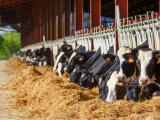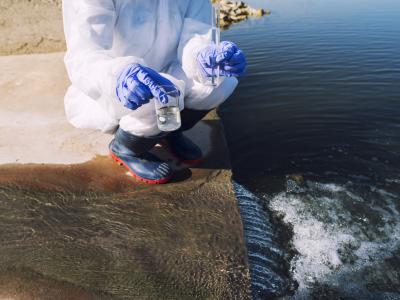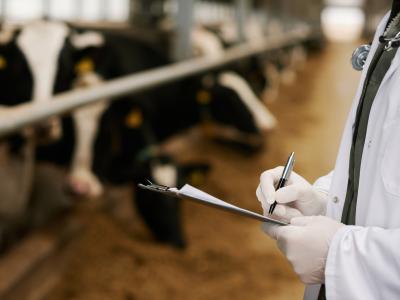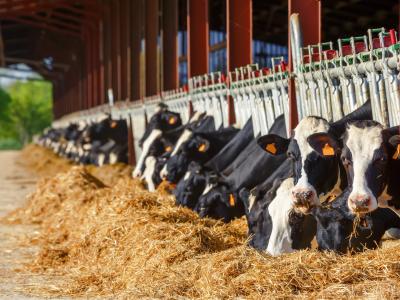Jan 21, 2005 (CIDRAP News) The next infectious disease to enter the United States might cross the border taped to a traveler's leg or tucked snugly under a tourist's hat.
Smuggling of wild animals has always posed hazards to human health, but the stakes may be getting higher today, given the role of animal hosts in lethal outbreaks such as SARS (severe acute respiratory syndrome) and avian influenza.
Any country can be one misstep away from an outbreak. Consider these cases:
- When a Thai man landed at the Brussels airport Oct 18, 2004, customs agents found two rare eagles in plastic tubes in his suitcase. They looked relatively healthy, but tests showed both had H5N1 avian flu. No human cases of H5N1 were found as a result of the smuggling attempt.
- Less than a month later, someone sneaked 28 parrots from Indonesia into Taiwan. Authorities euthanized the intercepted birds, which tested negative for the H5N1 virus, according to postings on the ProMED-mail Web site on Dec. 17, 2004.
- In Malaysia, 30 chickens and quail were thought to have acquired H5N1 infections by consuming contaminated remains of infected fighting cocks smuggled from Thailand, according to a ProMED-mail posting on Sep 8, 2004.
The United States is vulnerable to the same threats. The nation bans the importation of animals thought to pose a disease risk (as well as animals that are legally protected because of their threatened status). Authorities acknowledge, however, that controlling illegal imports is a constant battle.
Moreover, import restrictions don't necessarily cover all the species that pose a threat. Scientists know that many dangerous infectious diseases are naturally carried by animal hosts, but they don't always know which animals carry disease.
When SARS was recognized in 2003, it didn't take long for investigators to learn that civets, used as food in southern China, carried the virus. But it wasn't until last fall that researchers identified domestic ducks as silent carriers of the H5N1 avian flu virus, about 7 years after the first human outbreak of H5N1 in Hong Kong in 1997. Thailand recently completed a study of wild birds and found that several species not previously known to carry the H5N1 virus were infected.
Import inspectors are few
The United States relies on a network of agencies and a patchwork of rules to prevent illegal importation of wildlife.
The government has only 100 Fish and Wildlife Service (FWS) inspectors at ports of entry and 250 investigators nationwide. FWS, part of the Department of the Interior, also relies on other agencies to keep an eye out for smuggled creatures.
"We don't have wildlife inspectors at every port of entry," Sandy Cleva, an FWS law enforcement spokeswoman in Arlington, Va., told CIDRAP News. Instead, FWS collaborates with Customs and Border Protection (CBP) officers, part of the Department of Homeland Security, "so they would be alert to intercepting wildlife that's coming in illegally," she said.
"Customs has always lent a hand," Cleva added. Immigration and Customs Enforcement (ICE) officers often investigate related criminal activity.
The FWS's goals concerning wildlife imports are to protect threatened species and shield the nation from economic or ecological damage from imported pests, Cleva said. FWS also enforces the rules of other agencies, such as the Centers for Disease Control and Prevention (CDC).
CDC and other federal health agencies can ban trade in animals that pose a health threat. The agency banned the importation of African rodents in June 2003, civets in January 2004, and birds from eight Asian countries in February 2004. The US Department of Agriculture's (USDA's) Animal and Plant Health Inspection Service issued a similar order regarding Asian birds.
"We see enforcing these bans as a way to help our counterpart agencies and protect the American people," Cleva said.
Safety net is 'insufficient'
Unfortunately, one CDC expert noted, bans often address only known threats without covering potential threats.
Monkeypox is a good example. Seventy-one people contracted monkeypox in 2003 after contact with prairie dogs used as pets. The prairie dogs had been exposed to Gambian giant rats imported from Africa, the CDC's Morbidity and Mortality Weekly Report noted on Jul 11, 2003. It was the first US outbreak of the disease.
"Prairie dogs aren't normally exposed to monkeypox," said Paul Arguin, MD, acting branch chief of the CDC's Geographic Medicine branch, which deals with travelers' health and imported zoonoses. "They ended up being a wonderful host for transmission."
In response to the outbreak, CDC banned domestic sales of prairie dogs as well as importation of African rodents. However, it's still legal to import many rodents from other countries, even though they could carry diseases new to the United States.
"I'd say the strategy in the past has been reacting in a very event-focused [way]," Arguin said. But he said the CDC is in the process of revising its animal import rules to include more comprehensive restrictions on high-risk animals.
For instance, small mammals in general pose a risk of carrying communicable diseases, according to Arguin. Although he couldn't specify when the rules would change, he said they will focus on prevention, within reason.
"It's a risk-benefit analysis," Arguin said. "To try to prevent all of the zoonotic disease, we'd have to close the doors. It's very hard to get to zero risk."
In addition to working on new rules, CDC recently increased its network of human quarantine stations from eight to eleven, adding sites in El Paso, Houston, and Washington, DC, Arguin noted. Staff duties may include monitoring the arrival of nonhuman primates. If CDC officials saw a possible disease risk in primates, they would call the USDA, which manages animal quarantines.
Arguin recommends strengthening the monitoring of legal and illegal importation through stronger partnerships, more staff, more ports, more inspections, and improved interagency information sharing.
"Our safety net needs to improve," Arguin said. "The monkeypox outbreak occurred. That is evidence our safety net is insufficient."
Smugglingan evolving game
No matter how tough the import rules may get, smugglers will still dodge them. Ask Tamesha Woulard, FWS supervisory wildlife inspector in Chicago.
Woulard, who has inspected creatures as small as spiders and as large as a killer whale, likened wildlife smugglers to other criminals. "Are all drug dealers getting caught? Are all drunk drivers getting caught? They will always find ways to smuggle, then we'll adapt, then they'll find something new," she said.
The possibility of encountering sick animals makes education and safety paramount for inspectors, she said. A smelly, leaking container at an airport once turned out to contain bush meat. "You open it and see the bloody hands and arms of nonhuman primates," Woulard said.
She has added avian flu to her checklist of worrisome diseases, along with SARS and monkeypox.
"They're finding out this bird flu can transfer to mammals," Woulard said. (Cats, tigers, and leopards have contracted the flu.) "That puts [people] at risk even more."
Limiting the market
Reducing illegal imports of animals that can cause human diseases may depend on reducing the market for imported wildlife through education. That task is part of the mission of Peter Knights, executive director of San Franciscobased Wild Aid, which tries to eliminate wildlife trade in the name of species protection and animal welfare.
Smuggling "seems an almost demonically designed mechanism to spread disease," said Knights. "The wildlife trader takes it from one remote place and ships it round the world."
He advocates campaigns to educate the public and echoes the call for improved enforcement.
Enforcement efforts, "if they exist at all, are totally underfunded," Knights said. He recommends that the United States focus on "obvious chokepoints," such as Senegal and Cameroon, creating teams of people on-site to stop animals before they are smuggled out of their homeland.
The stakes are high, he said. "The frightening thing with the bird stuff is it only takes one smuggled bird coming in to spark an outbreak."
See also:
CDC rules/bans on importing animals
http://www.cdc.gov/ncidod/dq/animal.htm
Role of domestic ducks as 'silent' reservoir for H5N1
http://www.who.int/csr/don/2004_10_29/en/
MMWR monkeypox report of Jul 11, 2003
http://www.cdc.gov/mmwr/preview/mmwrhtml/mm5227a5.htm



















